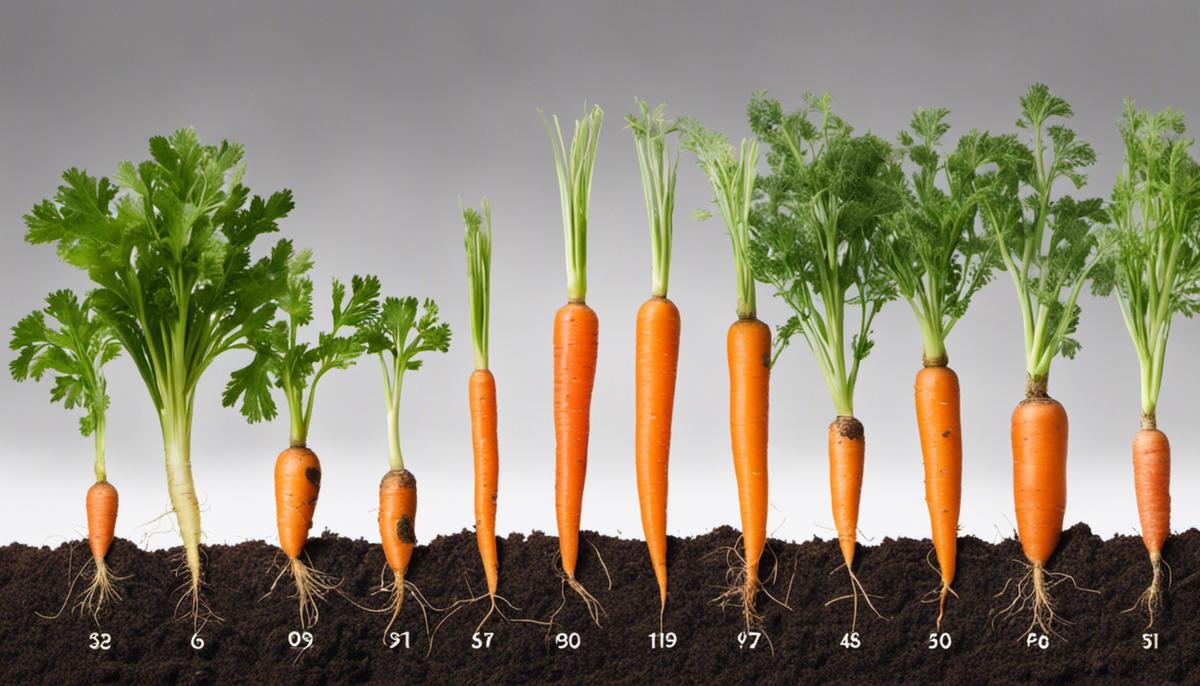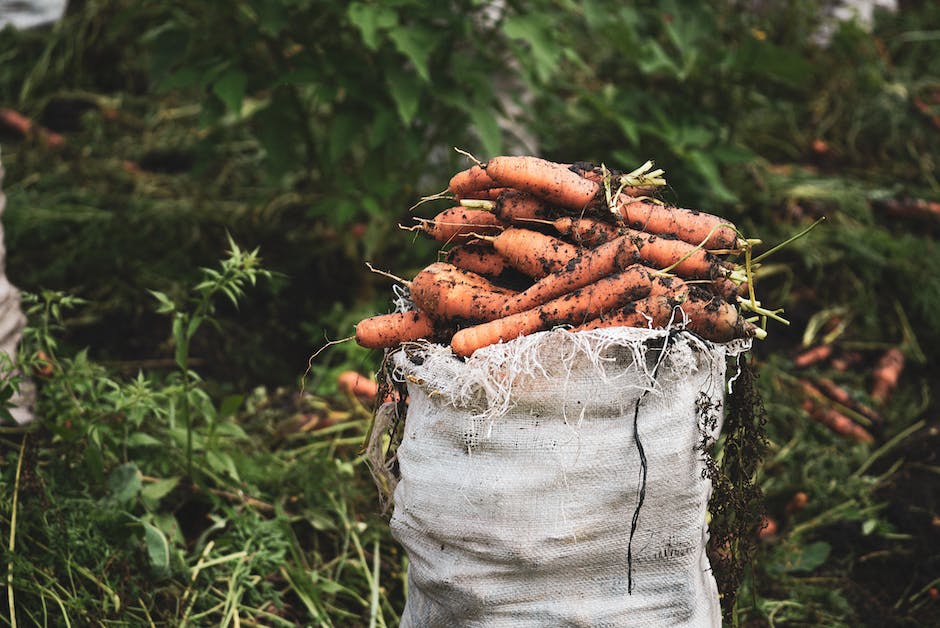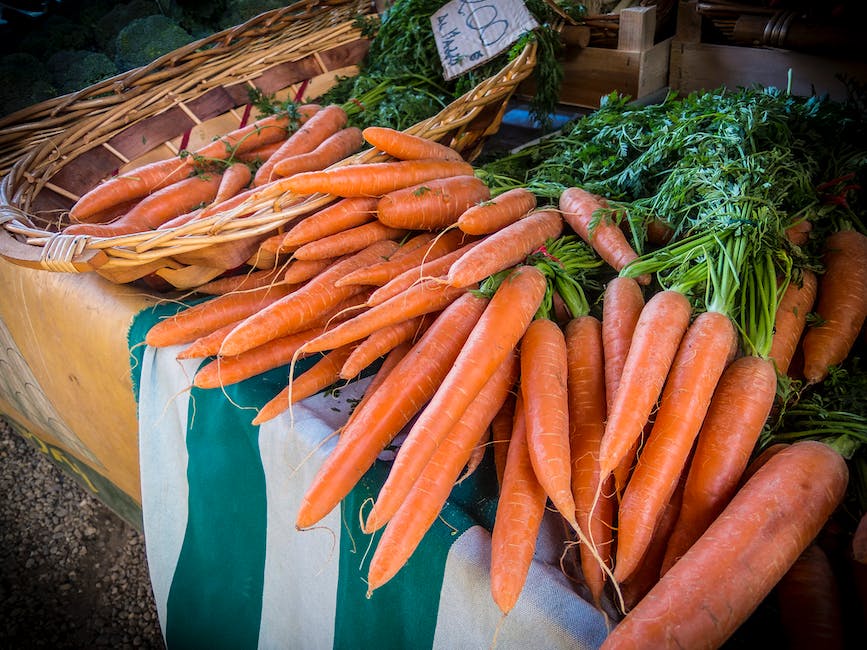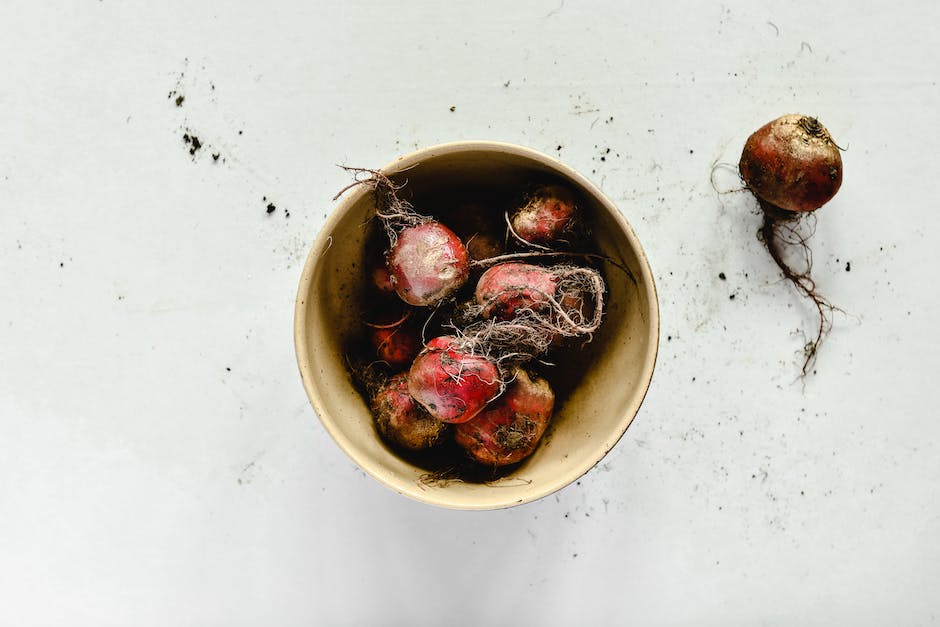Harvest Time Reveal: When are Carrots Ready

Carrots, with their vibrant hue and satisfying crunch, make a great addition to a fresh garden plate, but it’s important to know when they have fully matured for optimal flavor and nutritional content. Understanding the growth cycle of a carrot from seed to full bloom can be fascinating and rewarding for gardening enthusiasts. This resourceful guide aims to enlighten you about the stages of a carrot’s life and how long it typically takes for a carrot to ripen enough for harvest. Additionally, you will be guided through how to identify signs of readiness in your carrot crop, such as the size of the greens, the color of the crown, and the solidness of the flesh. Finally, we will delve into the proper techniques and tools to use when it’s time to harvest your carrots, without damaging the vegetable, and how to store them properly after harvest.
Understanding the Growth Cycle of Carrots
Unraveling the Growth Cycle of a Carrot Plant: A Journey beneath the Soil
Carrot plants are the unassuming champions of the garden, their vibrant roots hiding secrets in the soil. Dive into the world of gardening and the art of growing carrots, discovering an incredible, multi-stage journey packed with excitement and learning.
Begin the story by planting seeds in loose and well-drained soil, preferably during late spring when temperatures are around 70 degrees. The ideal soil temperature is crucial for germination, which is the first stage in the growth cycle of the carrot plant.
As the seeds start their bountiful journey, germination takes place within 14-21 days. This is when the seed sprouts a root, which will delve deep within mother Earth, slowly transforming into that glorious orange vegetable we all adore. Start to look out for tiny leaves sprouting on the surface—an accurate indication that propagation is happening just right.
Next, over the course of approximately 4-10 weeks, the carrot plant moves into the vegetative growth phase. It’s a period marked by impressive, leafy green growth above the soil, while quietly and steadily, the orange root extends in thickness and depth beneath the radiant soil. Regular watering during this phase is paramount — enough to keep the soil moist but not waterlogged. It’s a delicate dance between nature and nurture, one that sets the stage for the biggest event yet.
By 50-75 days after planting, the fabulous orange root, crowned with feathery green leaves, will be ready to meet its maker. The carrots have reached maturity and are ready for everyone’s favorite phase: Harvesting. This timing can fluctuate based on the variety of carrot grown and individual growing conditions.
The grand finale of the growth cycle happens when you gently tug on the green tops and a radiant orange root breaks free from the earth. Take a moment to bask in the knowledge that beneath your garden’s calm exterior, a bustling arena of growth has existed.
The growth cycle of the carrot plant is truly a wonder—one that every hobby gardener should witness at least once. It’s a dance of time, patience, and dedication, resulting in a satisfying crunch and an unbeatable sense of accomplishment. Remember gardening, much like any hobby, encourages us to slow down and appreciate the little wonders of life. Happy gardening!

Identifying Signs of Carrot Readiness
From Seed to Snack: A Deeper Dive into Carrot Cultivation
Embrace the thrill of turning a tiny seed into a crunchy, sweet carrot! This journey of transformation can be accomplished even by novice gardeners with a little bit of knowledge, patience, and practice.
At the heart of every growth journey is optimal soil composition. Carrot plants require soft, well-draining soil that’s rich in organic matter. The pH value should ideally be between 6.0 and 7.0. Higher or lower pH levels can make it difficult for the plant to take up necessary nutrients, hampering growth. Build a healthy soil foundation through the addition of compost, aged manure, or a slow-release granular fertilizer before planting to boost your crop’s vitality.
Equally essential to soil composition is the depth of planting. Plant your carrot seeds about a quarter-inch deep. The depth plays a significant role in nurturing germination and protecting the seed from environmental stressors like wind and heavy rain.
After germination, enter the development of the root system and foliage in the vegetative phase. This seemingly quiet phase is when the carrot is laying the groundwork for the beautiful, fleshy, and delectably sweet taproot we are all familiar with. From paper-thin initial growth state, these roots start packing on weight, reaching their full depth during this period. Do not disturb the soil during this process!
But how do you know when it’s time to say goodbye to the vegetative phase and hello to the reproductive stage? Here comes the delight of witnessing the first flower stalk rise. This phase signals that your carrots are transitioning to the final stage of their growth cycle. They are on the cusp of forming seeds, and this stage is known as bolting. But wait, keep those gardening gloves off just yet. Bolting is a common defense mechanism for carrots when they sense unfavorable conditions, so it’s essential to mitigate stressors during this time.
Lastly, let’s touch on the aftercare of your gardening project. After picking those crunchy treats, don’t forget to replenish your soil with organic matter and provide the necessary resting period before the next round of planting.
On this gardening adventure, remember that every stage is a learning moment, a time to bond with nature while harvesting the rewards of your dedication and patience. There’s nothing quite like the flavor of a carrot that was just moments ago in the ground. Cultivating carrots is an excellent way to pursue a healthy lifestyle and develop deeper respect for the rhythm and splendor of nature. Always keep in mind – happiness is found not only in the harvest, but also in the journey of growing your favorites from seed to table.

Proper Carrot Harvesting Technique
Now that we’ve ventured through the exciting process of nurturing our carrots, it’s time for the big moment. Considering how delicate our orange beauties are, the harvesting endeavor is a tricky process requiring the right techniques and some tender love and care. So, let’s dive right in, garden enthusiasts!
Applying the ‘ease up and slide’ technique will be our first step in reaping the fruits of our labor. Water the ground generously at least an hour before intended harvesting. Saturating the soil provides ease when pulling out these earthy gems and reduces the risk of causing harm.
Now, gently slide your fingers around the base of the carrot foliage. This isn’t the moment to get hasty or tug too hard. Feel the carrot top, where it meets the soil. This segment holds key to recognizing readiness for harvest. If it’s firm and roughly an inch across, it’s a sure-fire sign this orange treasure is ripe for picking.
Alright, now brace yourself for the moment of truth. Gripping the carrot foliage firmly yet gently, wiggle the carrot side to side. The wiggle step helps in loosening the soil around our crunchy harvest and creates an easy path out. Keep easing the carrot, progressively combining the wiggle with gentle upward pressure.
Did you feel the tell-tale ‘pop’ yet? That’s the joyous moment your carrot breaks free from its soil-y bed. Et voila! You’ve made your first successful harvest, one with minimal casualty and optimal satisfaction. Remember, successful carrot harvesting relies heavily on patience. A hard tug might get that carrot out, but there’s a strong chance the carrot will snap, leaving behind remnants in the soil. This is not something we’re aiming for.
Remember also, size doesn’t always indicate readiness. Some carrots might appear smaller but are ready for harvest, and some larger ones might still need more time.
Once your carrots are safely out of the ground, get rid of the excess soil by gently tapping the carrot, but avoid being too rough. Carrots can be stored with a small amount of soil on them, which actually helps keep them protected in storage.
There you have it, folks! Your very own harvested treasures, straight from your backyard to your dinner plate. Don’t forget to return the favor to the earth by adding organic compost to replenish the nutrients the soil generously provided to your carrots.
In the end, remember the wisdom of a seasoned gardener: “The vegetable garden is the seat of patience and love, where one puts their heart in the earth, and the earth rewards them in kind.” Here’s to many more joyous harvests!

An understanding of the growth cycle of the carrot, recognition of its ripeness signs, and knowledge of suitable harvesting and storage methods are key to reaping vibrant and healthy carrots. Remember, patience is crucial in every growth stage to allow for optimal development of your carrots, nature cannot be rushed. Be vigilant about the indicative signs that your carrots are ready for harvest; the appearance of the greens, the hue and prominence of the crown, and the firmness of the flesh. With measured technique, harvest them while ensuring minimal injury to the vegetable, followed by appropriate storage to retain their flavour and nutritional goodness. May your gardening endeavor be fruitful in yielding a bountiful carrot crop that is just right to brighten up any meal.



